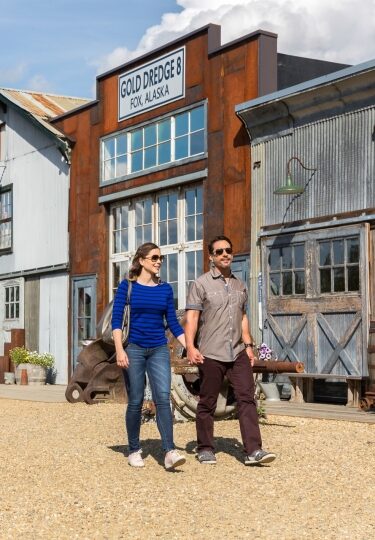The cry of “Gold! Gold! Gold in the Klondike” in 1897 unleashed a stampede of more than 100,000 hopefuls who descended on Alaska with a sole mission: to get rich.
Two years of hardship, suffering, frostbite, heartbreak, and bankruptcy (for the vast majority) ensued. Those were times of high ambition and low morals, of con men and opportunists.
Tented towns sprung up, docks were built on traditional Tlingit fishing beaches, and provisioners of every kind moved in. So it’s not surprising that the Klondike era, as well as the gold rush Alaska experienced in other places, including Juneau, Girdwood, and Fairbanks, have shaped the Alaska we see today.
Klondike Gold Rush National Historical Park, Skagway
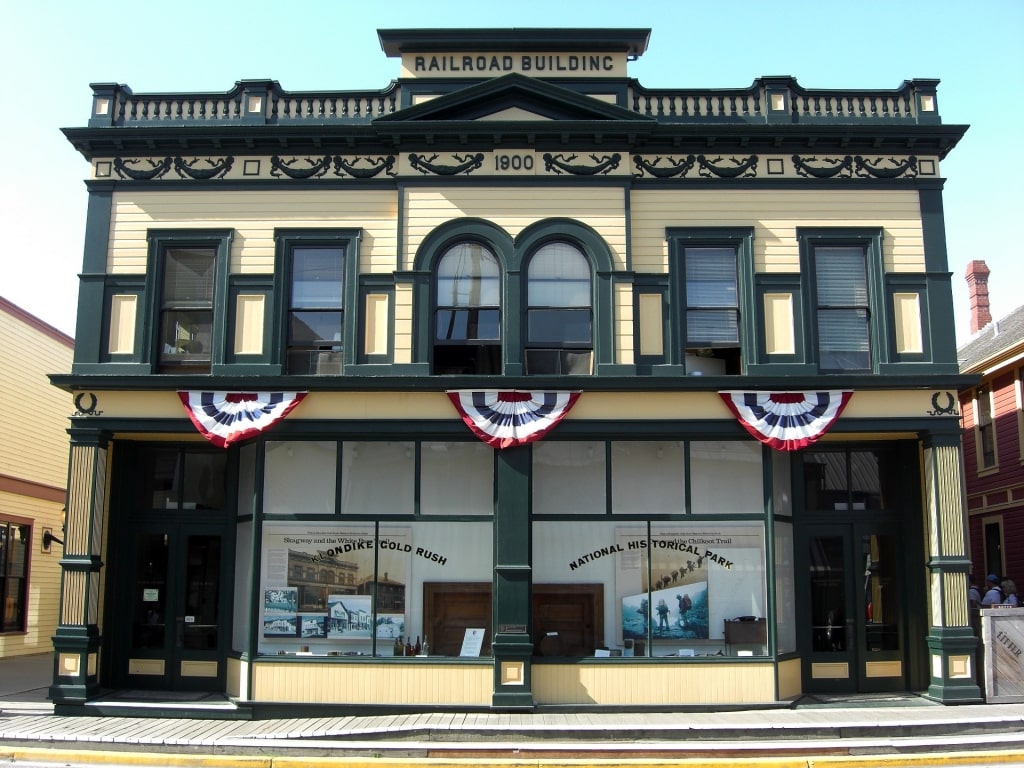
Klondike Gold Rush National Historical Park, Skagway Photo by Reywas92 on Wikimedia Commons, licensed under CC BY-SA 3.0
This isn’t a single park, as such, but a vast area of 13,191 acres that includes six blocks of historical Skagway, the most famous Alaskan Gold Rush town, the ghost village of Dyea, the White Pass Trail, and the Chilkoot Trail.
If you’re planning to ride the White Pass and Yukon Route Railway, stop at the park’s visitor center, which is located in the railway depot. The excellent 25-minute film, “Gold Fever: Race to the Klondike” tells the story of the events of 1897-1898 and leaves you much better informed for the rest of your time in Skagway.
There are exhibits to look at showing the different routes the prospectors took over the mountains and a replica of the ton of supplies each man was required to carry over the icy pass.
The White Pass & Yukon Route Railway, Skagway
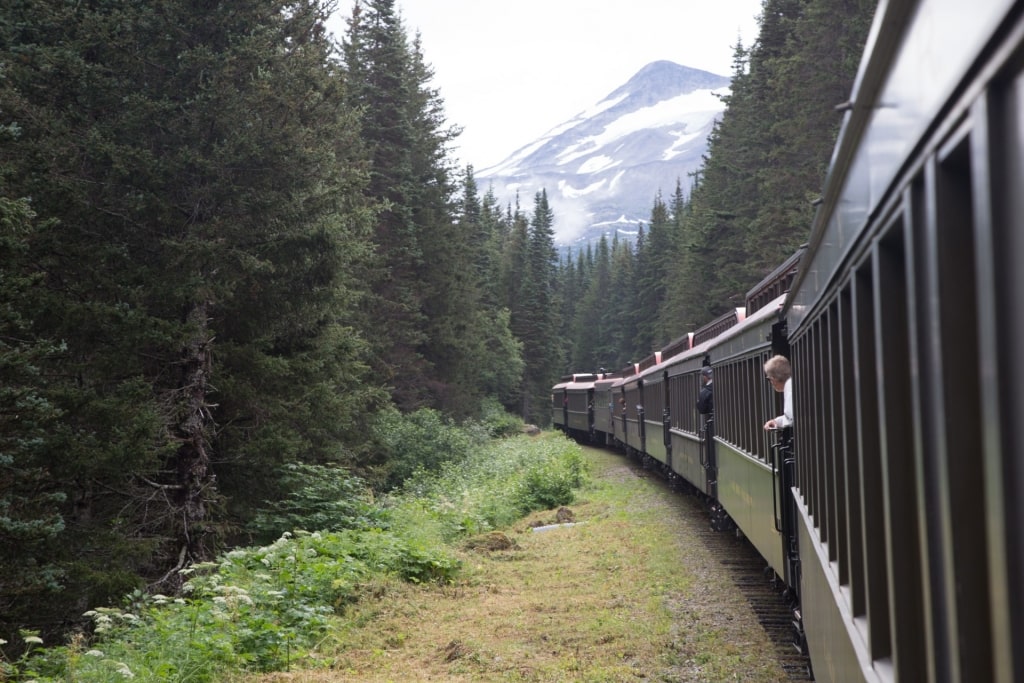
White Pass & Yukon Route Railway, Skagway
This narrow-gauge railway journey from Skagway up to the top of the White Pass, 2,888 feet above sea level, is the best way to get a feeling for the terrain over which gold prospectors had to trek en route to the Yukon gold fields.
There were two routes from Skagway and its environs: the White Pass and the Chilkoot Trail. Both were steep, icy in winter, and dangerously muddy in summer.
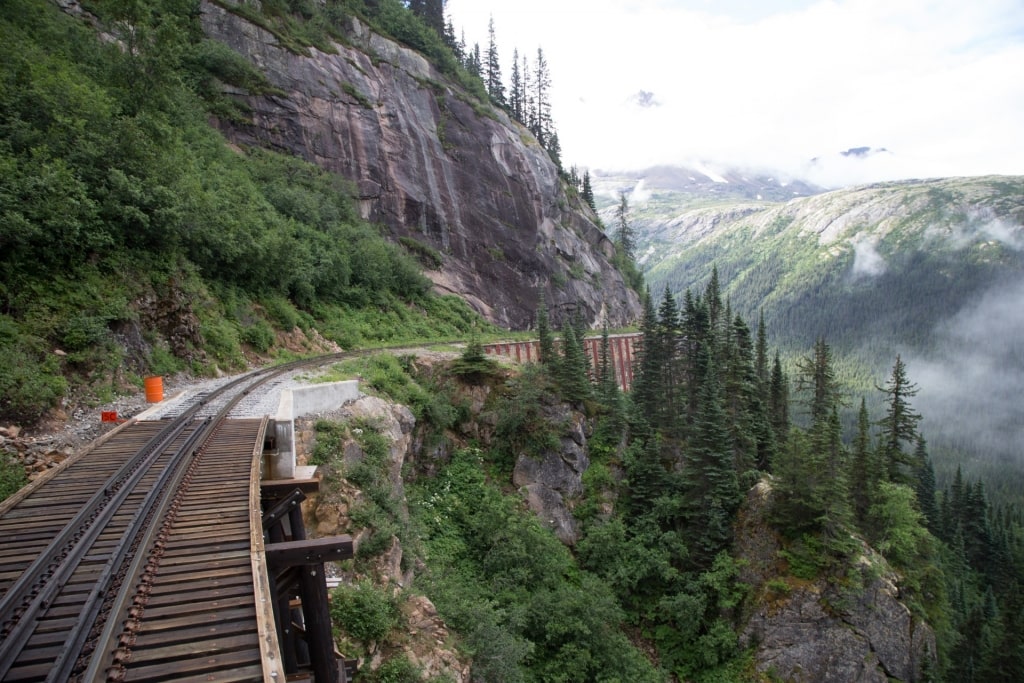
White Pass & Yukon Route Railway, Skagway
The railroad was built after the gold rush and is both comfortable and thrilling. You’ll clatter up steep inclines, past rushing rivers, plunging gorges, and over narrow bridges. There are glimpses of the “Trail of ‘98”, the impossibly narrow track over which prospectors trekked.
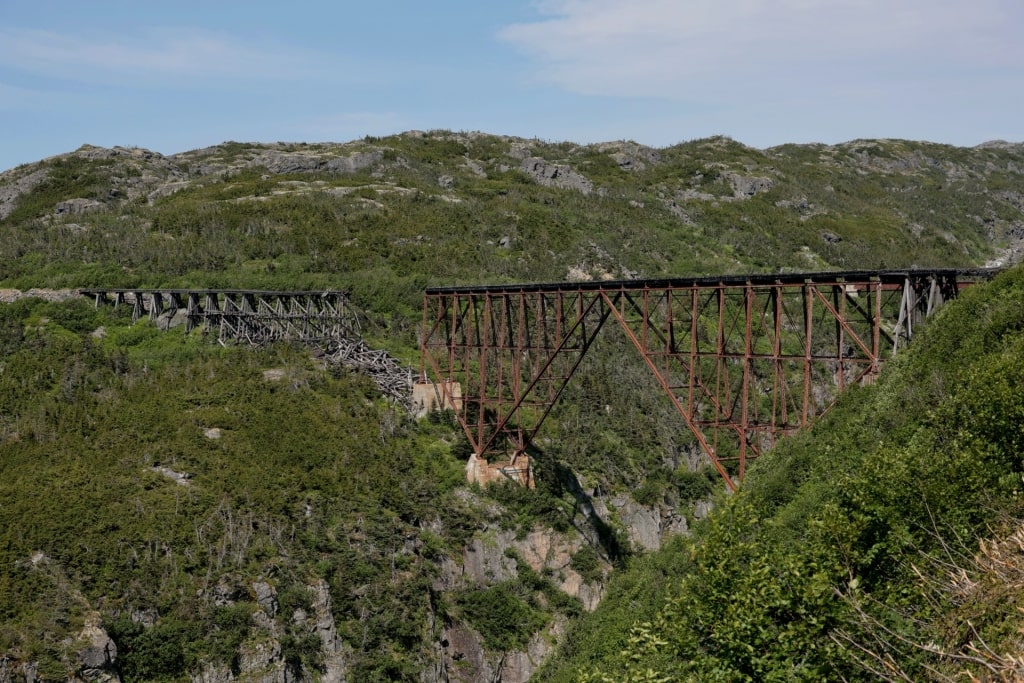
Dead Horse Gulch, Skagway
You’ll see the poignant Dead Horse Gulch, where more than 3,000 animals perished. More uplifting is the glimpse across the valley of Bridal Veil Falls, tumbling over a rock face in a series of ever-widening cascades.
Read: A Look at the Fascinating Culture & Traditions of Alaska
The Chilkoot Trail, Dyea
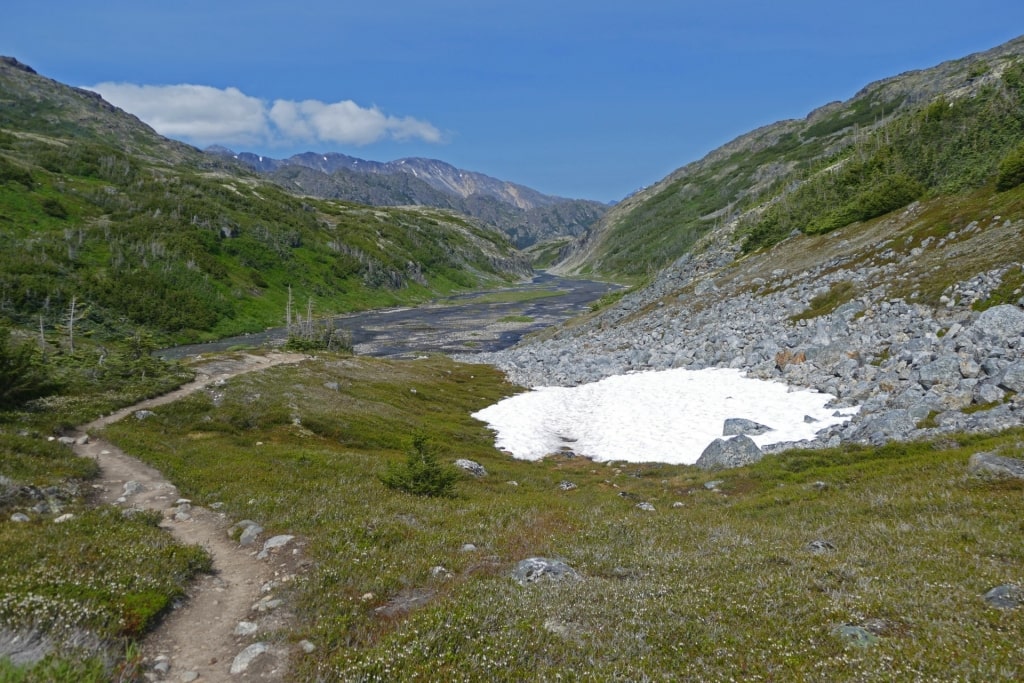
Chilkoot Trail, Dyea
This precipitous trail was the most direct route from the coast to the Yukon River and was a popular, if perilous choice. It originated as a trading route for the indigenous population. Today, it’s a popular hiking route in Alaska, extending 33 miles over the mountains.
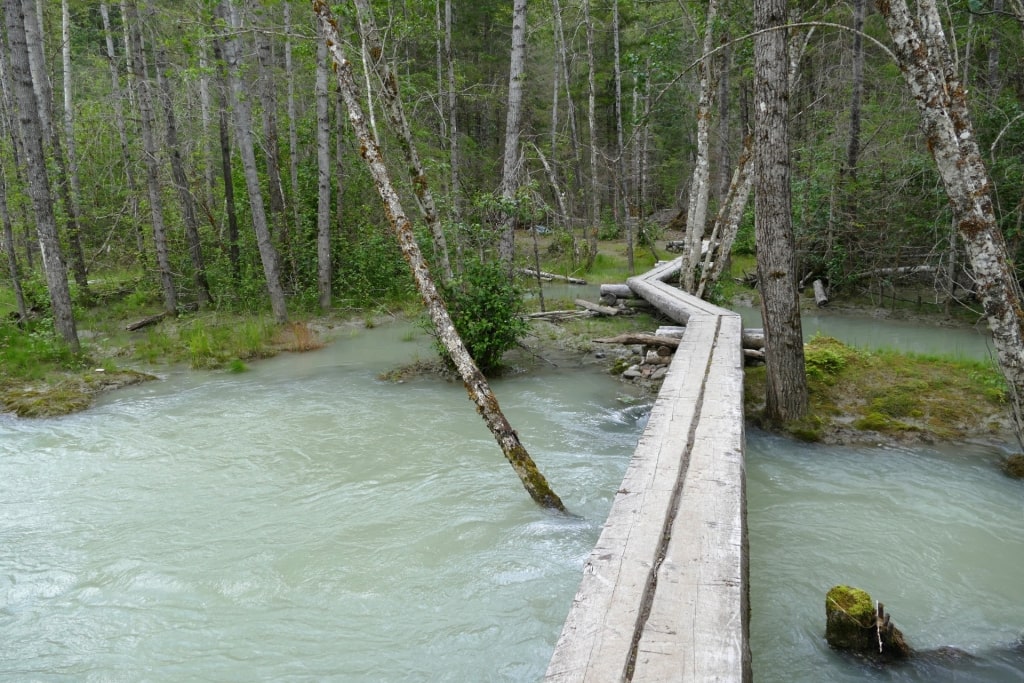
Chilkoot Trail, Dyea
One of the best ways to experience the trail and the surrounding scenery is to combine a guided hike with a float down the Taiya River to its tidal estuary. With nothing but the sound of birdsong and the wind rustling in the trees, you’ll have to imagine the scene when the trailhead was a bustling tent city.
Try to picture the scene in winter when prospectors had to tackle the bitter cold, snow, and ice. Add into the mix the need for men to carry all their provisions on their backs, as the Chilkoot Trail was too steep for pack animals.
Once the trail had been conquered, it was still another 500 miles by boat to the gold fields, so enormous amounts of gear were required.
Dyea
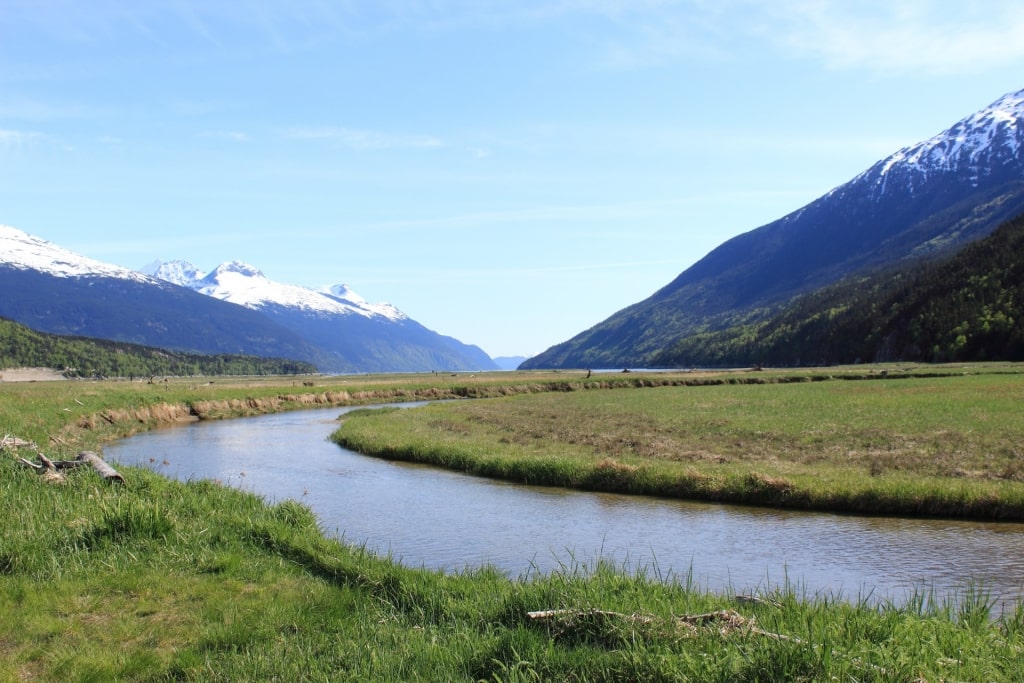
Dyea
If you want to get a feel for the days of the Gold Rush but don’t want to tackle the Chilkoot Trail, you can still pay a visit to Dyea, an Alaskan Gold Rush town located nine miles from Skagway, at the trailhead.
Back in the day, this was a tented town of feverish activity as prospectors prepared to start the lengthy trek and boat journey. Now, it’s a ghost town, reclaimed by nature, owned by the National Parks Service, and protected as an archaeological site.
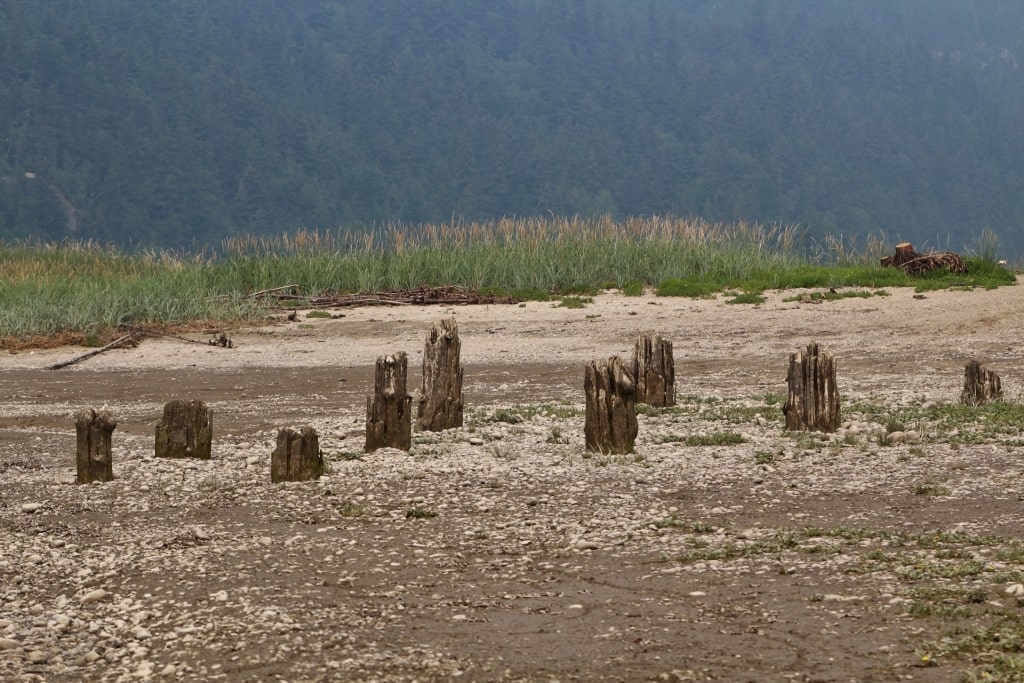
Dyea
During the peak of the Gold Rush, Dyea had more than 150 businesses, including hotels, saloons, brothels, and banks. But the construction of the railway in Skagway, a terrible avalanche in 1898 that killed more than 70, and dwindling interest in the Yukon’s gold fields led to the town’s decline.
Little remains—just a few wooden facades, the weather-worn pilings that supported a somewhat shaky jetty, and a handful of artifacts. You can see the so-called Slide Cemetery, too, where the victims of the avalanche are buried.
Gold Rush Cemetery, Skagway
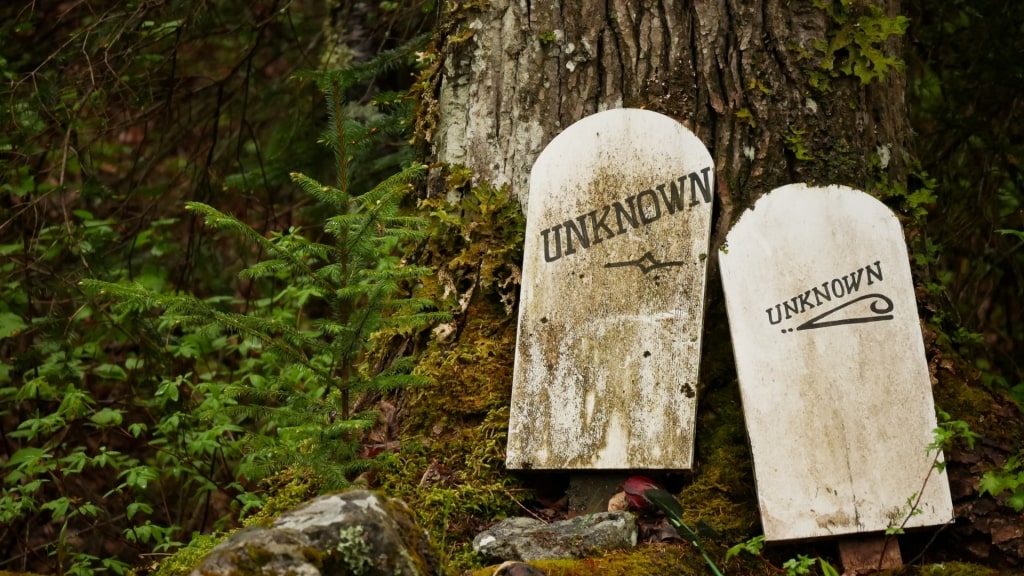
Gold Rush Cemetery, Skagway
If you want to dig deeper into the town’s association with the Gold Rush, one of the best things to do in Skagway is to take the short, scenic walk to the Gold Rush Cemetery. You can even download a list of who’s buried here and what happened to them; a fair few record “shot” or “murdered” as the cause of death.
Possibly the most famous occupant is Jefferson “Soapy” Smith, one of the most notorious con men of the Gold Rush days. Smith was shot by local Frank Reid on July 8, 1898 after swindling a returning Klondike miner out of his haul of gold. Reid himself died from his injuries a few days later but was regarded as a hero.
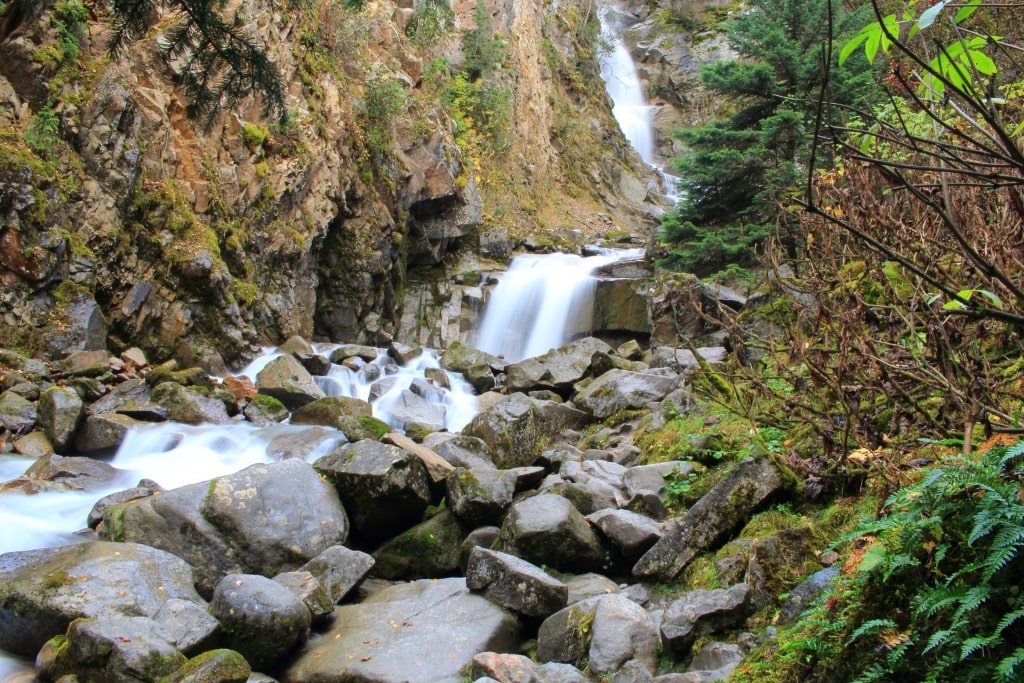
Lower Reid Falls
While you’re here, stop to admire the tumbling Lower Reid Falls—one of Alaska’s most beautiful waterfalls—named in his honor.
Alaska State Museum, Juneau
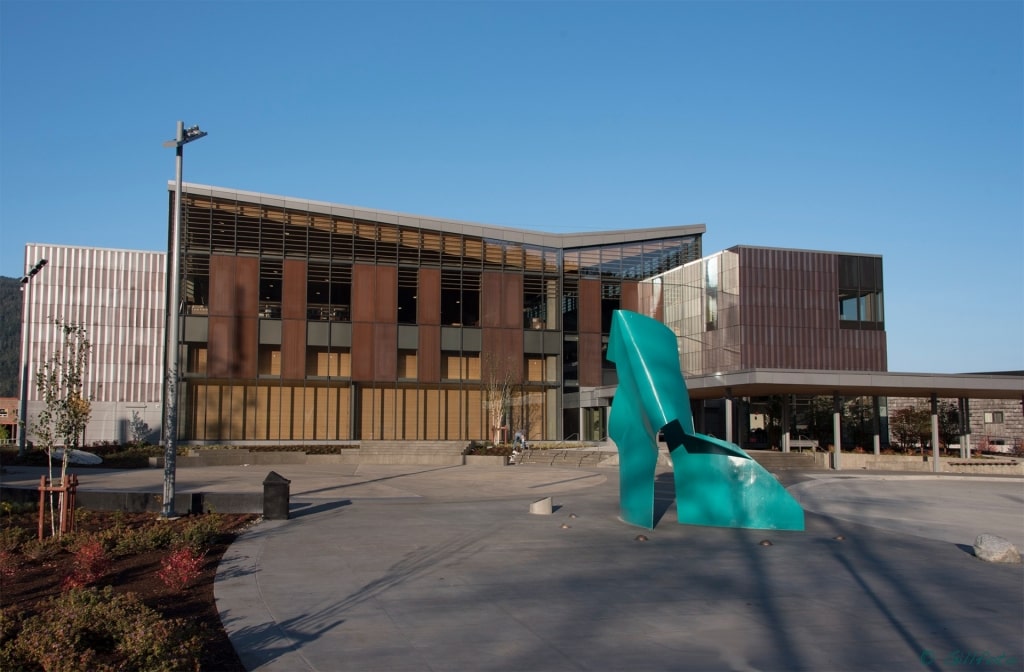
Alaska State Museum Photo by Gillfoto on Wikimedia Commons, licensed under CC BY-SA 2.0
Juneau, the state capital, has its own history with gold. In 1880, several years before gold was discovered in the Yukon, prospectors Richard Harris and Joe Juneau, after whom the city was eventually named, discovered gold in a stream. They named this, unsurprisingly, Gold Creek.
More gold was discovered in Silver Bow Basin, the source of Gold Creek, which put Juneau on the map and kicked off a frenzy of prospecting and claims to land. Juneau’s gold mines continued to be active until the 1940s when the economic pressures of World War II led to the closure of the last one.
Relive this era in the city’s past in a visit to the Alaska State Museum, one of the best museums in Alaska. A series of fascinating exhibits take you through the centuries from the original Native cultures to the discovery of gold, the journey towards becoming Alaska’s state capital, and Juneau’s economy today, much of which depends on tourism.
AJ Mine Gastineau Mill, Juneau
Take a journey back into the past—and underground—in a thrilling tour of what was once the largest gold-producing mill in the world.
The Alaska Gastineau Mill was built in 1913 and was operational until 1944. At the site, you’ll be given a hard hat. You’ll walk along a 360-foot underground boardwalk that was once the conveyor tunnel bringing crushed ore to the mill.
Inside, miners will demonstrate the techniques used both in the early days and more recently, living proof of just how tough gold mining is.
Back at the mill site, you can pan for gold and garnets yourself, explore the ruins of the old mine, and warm up after your visit with hot chocolate.
Crow Creek Gold Mine, Girdwood
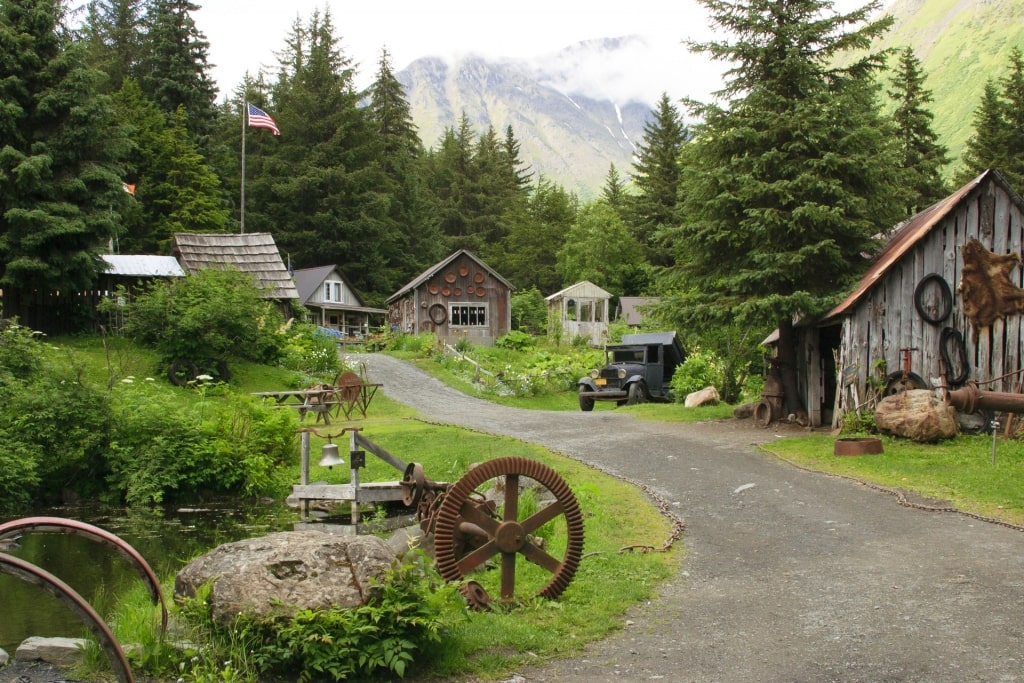
Crow Creek Gold Mine, Girdwood
Although pretty Girdwood is better known nowadays as a gateway to the ski slopes and hiking trails of Mount Alyeska, its modern origins are connected to the Gold Rush.
James Girdwood, after whom the Alaskan town is named, made the first claim on nearby Crow Creek in 1896. In the space of just two years, Crow Creek Mine had become the most productive mine in the area. It’s still operational today.
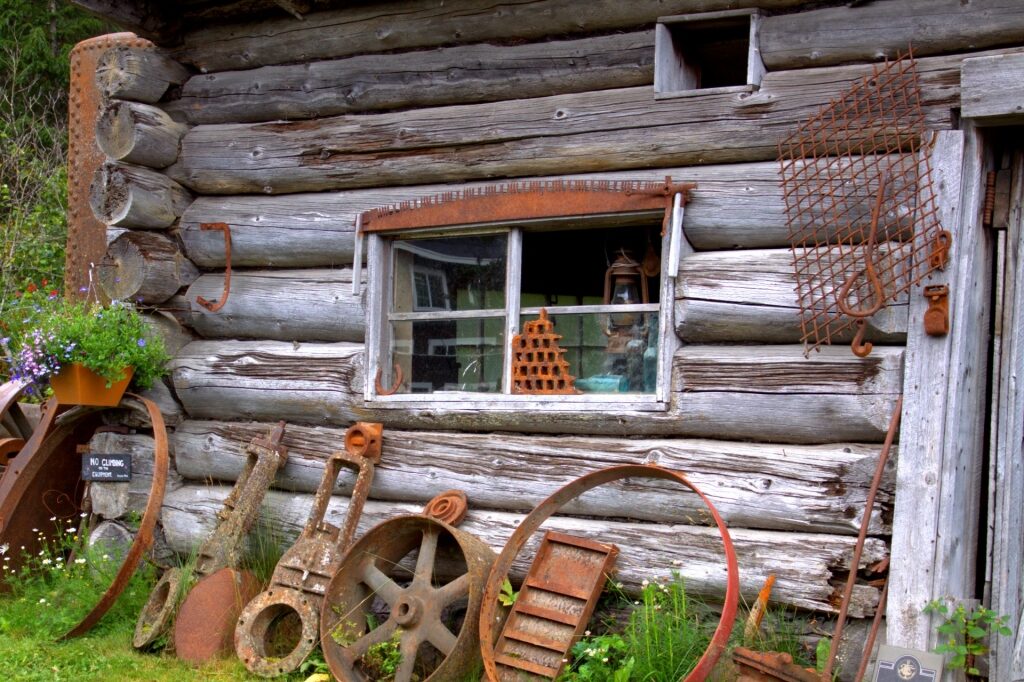
Crow Creek Gold Mine, Girdwood
Join a guided tour to see the old buildings and original sluices and watch actual gold miners at work.
Various different techniques and pieces of equipment are used at Cow Creek, and you can try some yourself. You’ll be issued with a gold pan, shovel, bucket, a glass vial for your loot, and a pay dirt packet to start you off.
If you can tear yourself away from gold panning, there are beautiful gardens to explore against a backdrop of jagged, snow-covered mountains.
Pioneer Park, Fairbanks
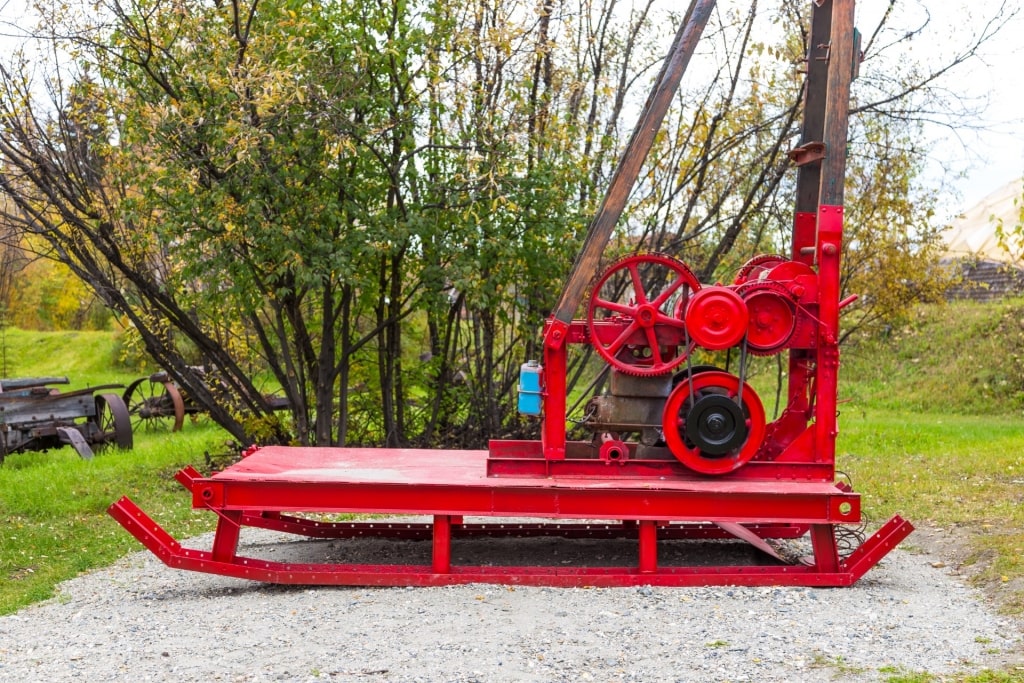
Pioneer Park, Fairbanks
Fairbanks had its own gold rush at the turn of the 20th century when gold was found in the rivers to the north of what’s now the city. Relive those heady times today in Fairbanks’ Pioneer Park, a themed village and visitor attraction that whisks you back to the Alaska of the Gold Rush era.
Some of the buildings are original, moved from the city’s downtown area for their protection, with one street preserved as it would have looked during the Gold Rush years.
You can visit Mining Valley while you’re here, where vintage mining equipment gives you a good idea of what digging for gold was actually like. In the evenings, there’s a salmon bake and a show that brings some of the characters from those colorful days to life.
Juneau-Douglas City Museum, Juneau
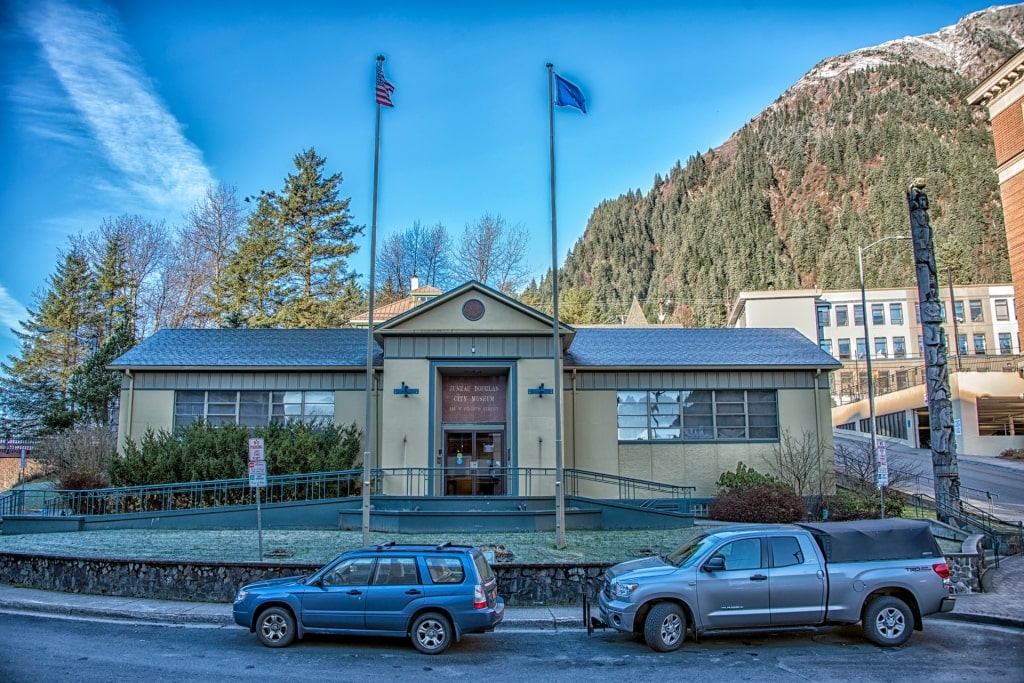
Juneau-Douglas City Museum Photo by Gillfoto on Wikimedia Commons, licensed under CC BY-SA 4.0
Another captivating museum in Alaska’s capital, the Juneau-Douglas City Museum features a mining gallery with interactive exhibits where you can boost your knowledge of the Gold Rush.
Visiting here is one of the best things to do in Juneau. There are displays of rocks and minerals and an interactive cross-section of the Treadwell Mine, which endured a catastrophic collapse in 1917.
You’ll also learn about mining techniques, while kids can dress in miner’s clothing and hard hats and learn about how mine phones worked for communication. There’s a 26-minute documentary, too, which tells you the story of Juneau from the origins of the Tlingit through the Gold Rush era to the present day.
Read: Tips for Going on an Alaska Cruise With Kids
Gold Dredge 8, Fairbanks
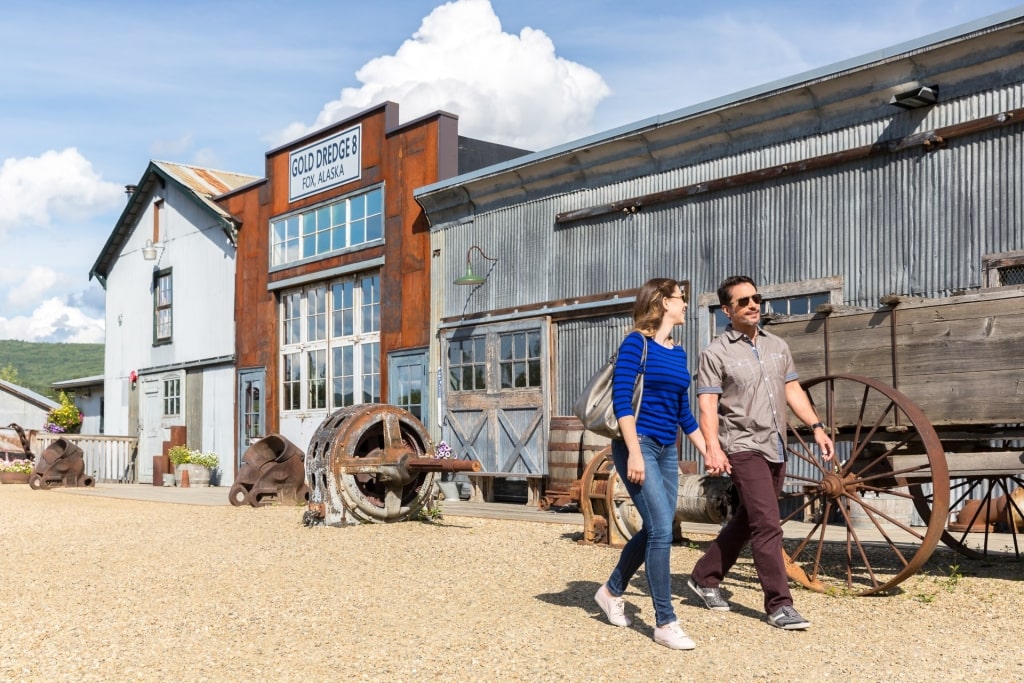
Gold Dredge 8, Fairbanks
Gold Dredge 8, located in the Goldstream Valley near Fairbanks, extracted millions of ounces of gold from the icy tundra during its years of operation, from 1928 to 1959.
The dredge played a vital role in the economy of the Tanana Valley and nearby Fairbanks. Today, it’s listed on the U.S. National Register of Historic Places and makes a fascinating day trip.
Your visit starts with a ride on a replica of the old narrow gauge Tanana Valley Railroad, with commentary along the way. You’ll see the actual dredge and learn more about its workings, and then visit the Mining Museum.
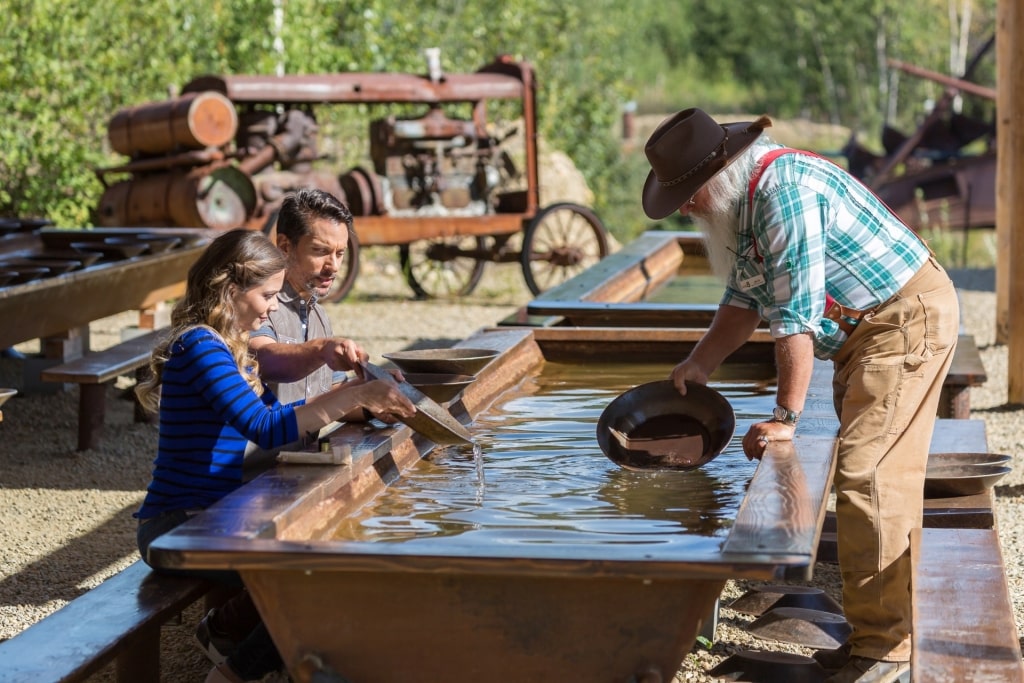
Gold Dredge 8, Fairbanks
Here, there are artifacts from the beginning of the 20th century, as well as exhibits explaining how gold is mined, including the challenges of working with ground that’s frozen for much of the year. There’s even a display of fossils dating back to the Ice Age that were discovered here.
Naturally, there’s a chance to try your luck at panning for gold, a must do in Alaska, with experienced miners on hand to help you refine your technique.
The Red Onion Saloon, Skagway
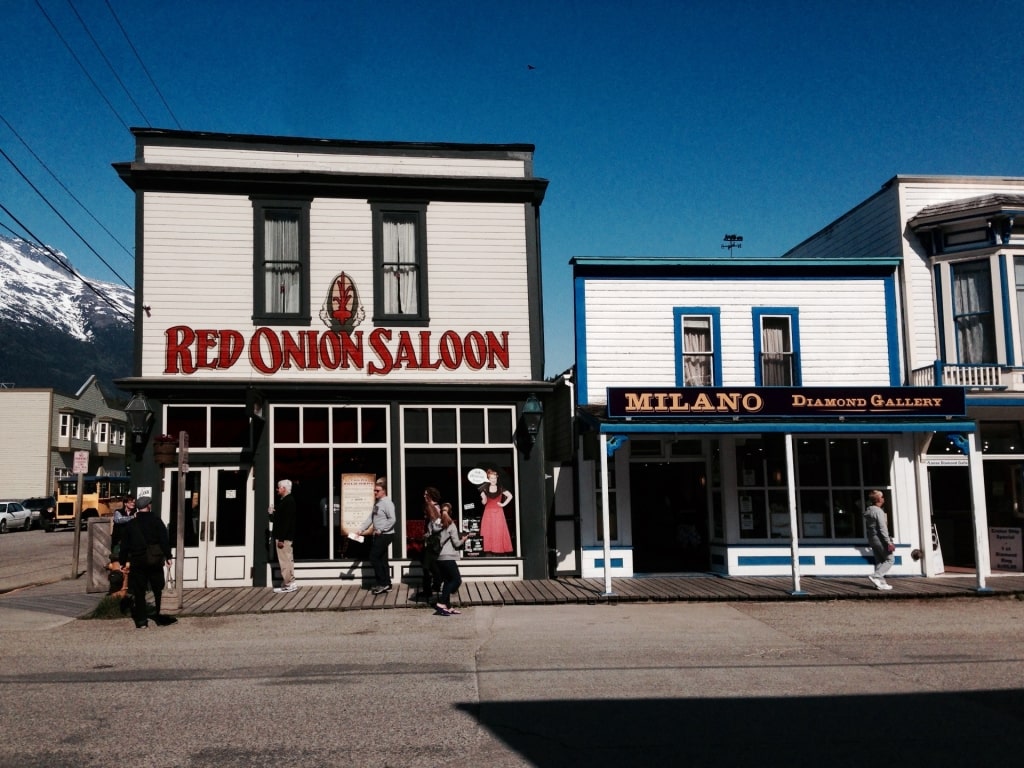
Red Onion Saloon Photo by Warren LeMay on Flickr, licensed under CC0 1.0
One of the best places to visit in Alaska, Skagway’s Red Onion Saloon is a local institution. Built in 1897, as Gold Rush fever was reaching its peak, this was the town’s most flamboyant and successful bordello.
Today, it’s a historic bar, restaurant, and museum which shares a different perspective on the Gold Rush from the point of view of the women who worked here.
“Madams” in costume (in reality, very funny and skilled actors) can take you on a walking tour of downtown Skagway, reliving stories of Klondike Kate, Cad Wilson, and Diamond Lil. The tour ends at the Brothel Museum on the upper floors of the Red Onion Saloon.
Here, you’ll see the original bedrooms of the brothel, costumes, artwork, and other relics. Fans of the paranormal are invited to keep an eye out for a sighting of Lydia, the resident ghost. After the visit, stop in the restaurant for pizza and Alaskan beers.
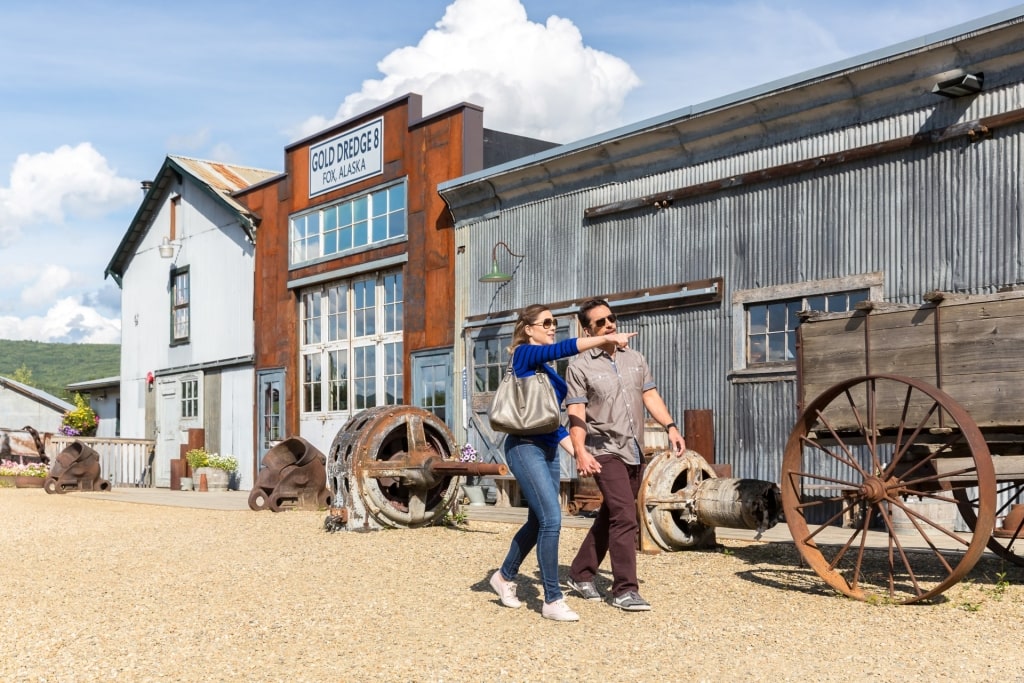
Gold Dredge 8, Fairbanks
Do you have gold fever? Learn more about the fascinating era of the Gold Rush on a cruise with Celebrity. Browse our Alaska cruises and plan your great adventure.
